What is a Similarity Report?
The similarity report highlights text in a student’s paper that matches an online source. Lecturers can choose to generate a similarity report when a student submits their assignment through Turnitin in Blackboard.
Why make use of Similarity Reports?
The similarity report can be used as a formative learning tool to assist students in understanding and avoiding plagiarism. It is possible to allow students to see the similarity report produced on their submitted work.
A similarity report can support tutors in the deterrence or detection of plagiarism and collusion to help maintain the academic integrity of work.
How to do it
When is a Similarity Report produced?
The choice to generate a report is made when a New Assignment submission is set up. You will need to choose Optional Settings and select Yes under the heading ‘Generate Similarity Reports for submissions?’ to enable this feature.
Allowing students to see their Similarity Reports
Choose the following settings when creating a new Assignment, select the Yes box under ‘Allow students to see the Similarity Reports?’.
And then under the drop down menu beside ‘Generate Similarity Reports for submissions’ choose either:
- Generate reports immediately (students cannot resubmit)
If you want students to see a report before the Due Date but not be able to submit further work. - Generate reports immediately (students can resubmit until due date): After 3 resubmissions, reports generate after 24 hours
If you want students to be able to see their report before the Due Date. They can then re-draft their work in response to the content of the report and re-submit.When this option is chosen, Similarity Reports will regenerate within an hour after the assignment deadline, to allow student submissions to compare against one another within the assignment. A change in the Similarity Report similarity index may result from this regeneration of the reports. - Generate reports on due date (students can resubmit until the due date)
If you only want students to see their report after the hand-in deadline, for reference (note: with this setting students can still resubmit up until the due date).

How to open the Similarity Report
1. Go into a Blackboard content area for the assignment, usually Assessment.
2.. Click on the title of the assignment to open the Assignment Inbox.

3. Click on the percentage score under the Similarity column beside a particular student’s name to open the full Similarity Report in the Document Viewer.

In the Assignment Inbox a percentage score (with colour indicator) for each of the students’ work is shown under the Similarity column. This is the total amount of text that has been matched to other sources in an assignment.
The overall percentage score is known as the Similarity Index.
This ‘at a glance’ guide should not be used as a measure of plagiarism. Even a 1% score could potentially be plagiarised content.
Navigating the Similarity Report in the document viewer
Click the red numerical score in the similarity toolbar to show the Match Overview panel.
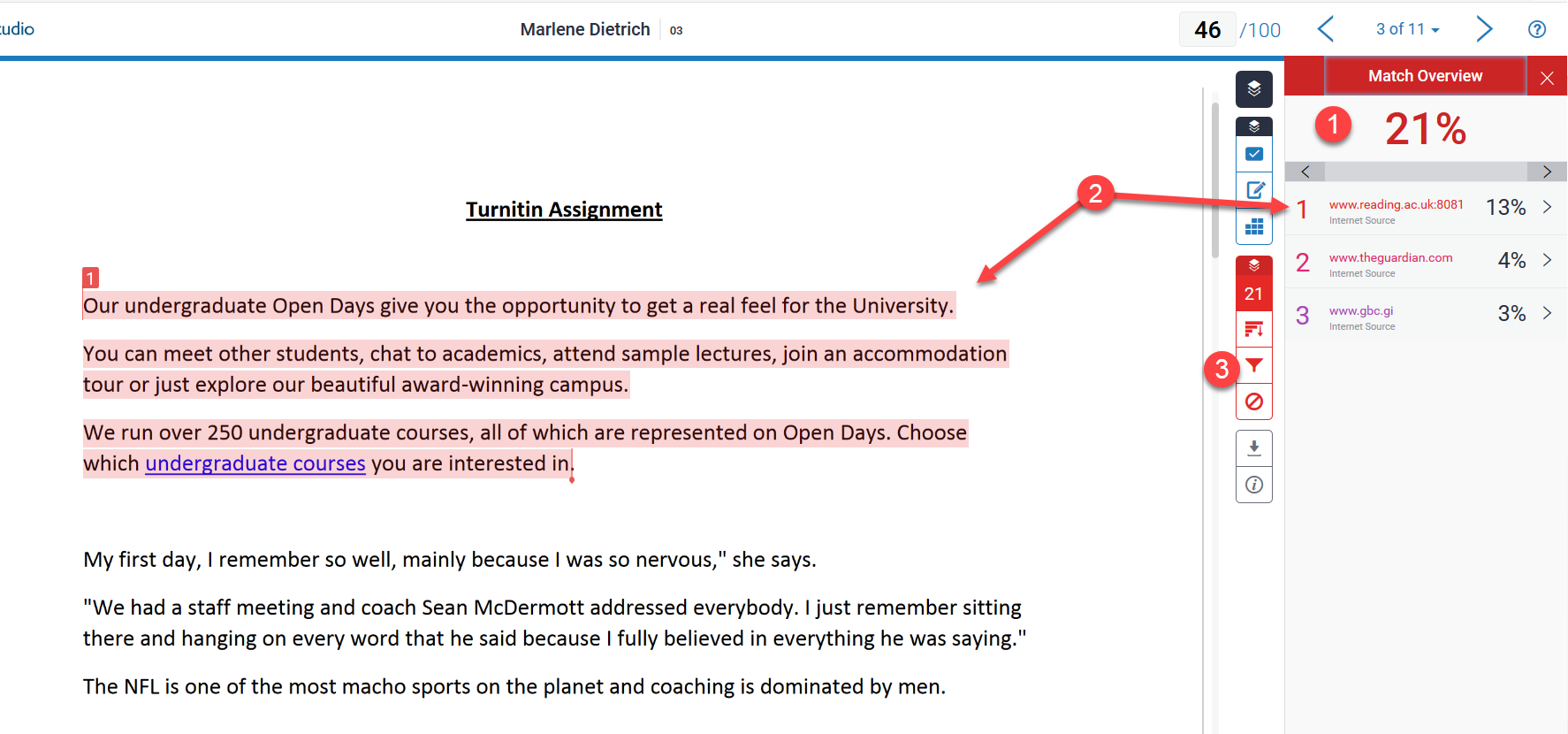
1. The Similarity Index shows the total percentage of matched text as a proportion of the assignment.
2. Matched text is highlighted on the assignment. Each match is numbered and colour coded in the Match Overview sidebar for easy reference.
3. The Filter icon can be used to exclude the bibliography, quotes or small matches.
View the source of a match
The Match Overview sidebar shows a list of the individual matches, with a suggested most likely source and a separate percentage score for each of these, as a proportion of the assignment’s total text in descending order.
Navigate to a match on a student’s assignment:
1. Click on one of the matches in the Match Overview sidebar to jump to the highlighted text on the student’s paper.
Show an individual match and possible sources:
2. Click on the View Match Breakdown arrow icon that appears.
The Match Breakdown shows:
a. A full list of alternative online sources Turnitin has identified for the match.
b. The number of times the matched source appears throughout the assignment. Click the arrows on the grey menu bar to move to the location of each match.
c. The Direct Source Comparison pop-up window. This window highlights where the match has been made in the original source text.
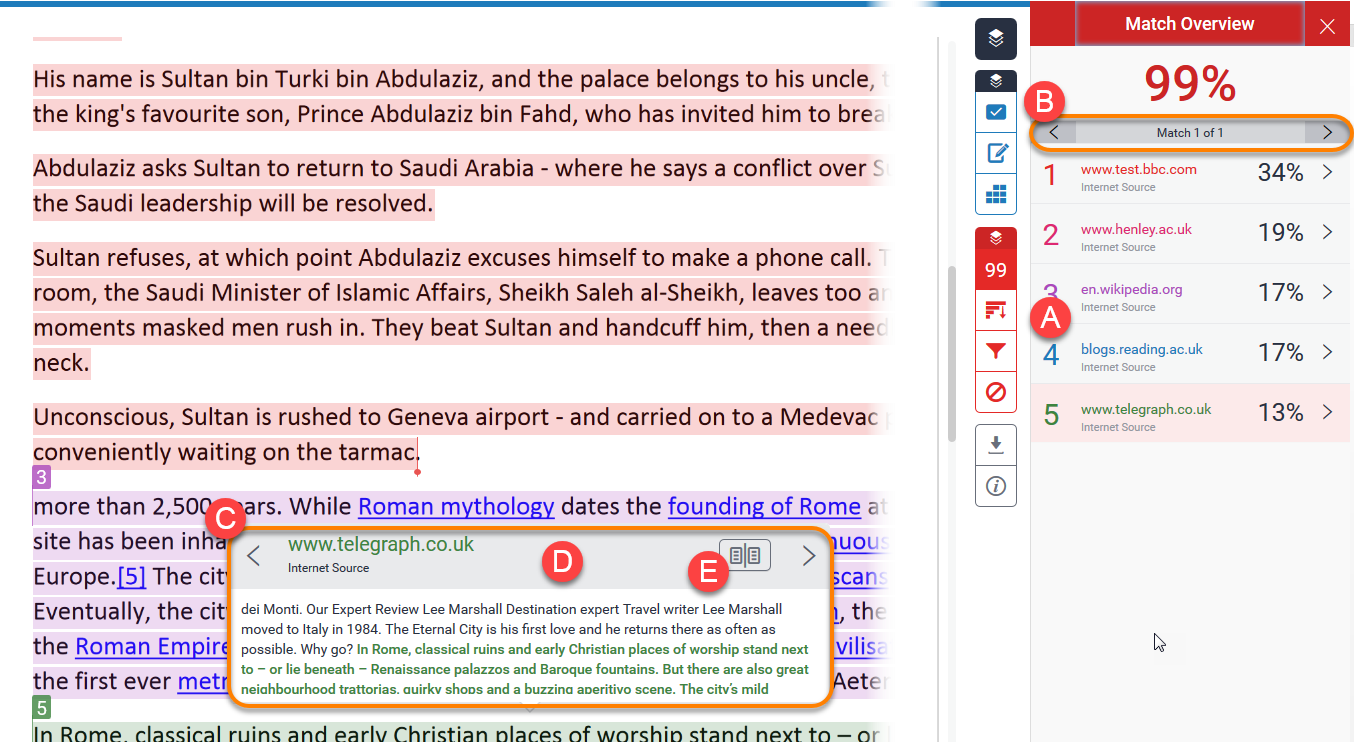
View the original website or full text of an Internet source
d. Click the web link in the Direct Source Comparison view the web source page.
e. Click the ‘Full source view’ button to see the Full Source Text of the source in the side panel.
Click the Arrow next to the Match Breakdown heading to Return to Match Overview.
View a match made to another student’s paper
Where a match has been made to a Student Paper (and you see Submitted to University of… as a match), you will be able to view the text source of the student paper:
- If it has been submitted to the same assignment inbox.
- Or if it has been submitted to another assignment inbox in a course you have Instructor permissions on in Blackboard.
Request to see a student paper from another module or institution.
Where the paper has been submitted to another course in Blackboard that you don’t have access to, or to another University; you can make a request to view the text of the paper via email.
1. In the Match Overview sidebar , click the View Match Breakdown arrow icon that appears to show the Match Breakdown.
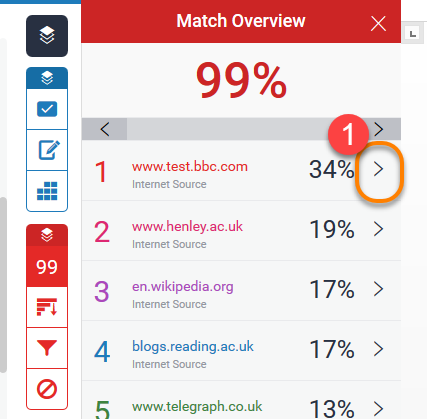
2. In Direct Source Comparison pop-up window that appears over the document, click the ‘Submitted to University of X’ link.
3. This takes you to the student paper itself, if you have permission, or a page to make a request to see it.
4. Enter your University email address in the box provided.
5. Click the Send a request to view this paper button.
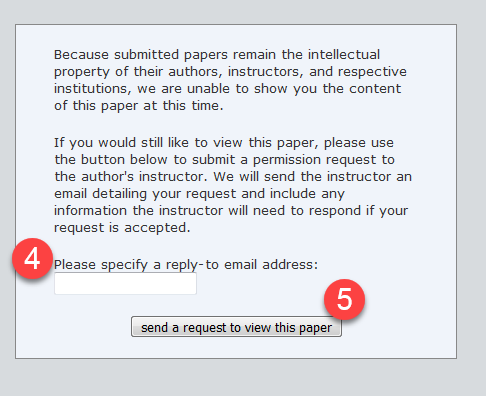
6. Any tutors connected to that student’s submitted paper automatically receive your request. Turnitin sends them the text of the paper in an email and they are asked to forward the email to the person requesting access. This decision is at the academic’s discretion.

7. If the academic decides to reply, you will receive the email with the text of the student paper included.
Please only make requests to view papers where there is a substantial match to another paper that cannot be explained after looking closely at the report and requires further investigation. It is unlikely that the requests made for small matches will be accepted by the corresponding University.
Filter and exclude sources in a report
Applying filters and exclusions will reduce the Similarity Index percentage and refine the number of matches shown in a report.
Filter out the bibliography, quotations and small matches.
Acceptable types of matches can be filtered out of the similarity report when setting up a new Assignment. Or the filter can be applied on a single similarity report when viewing it.
1. Click on the Funnel shaped ‘View / edit filter and settings’ icon in the Similarity Toolbar.

2. Under Filters and Settings, tick the box to:
- Exclude Quotes – where text has either inverted commas (“x”) around it or text has been block indented.
- Exclude Bibliography – Any references shown after a Bibliography or References heading
(see Turnitin’s guide Excluding quotes and bibliographic material for details of how these settings work) - Exclude matches that are less than a certain number of Words or a percentage (%) of the assignment. Enter an appropriate number in the box provided.
3. Click Apply Changes to revise the matches shown in the similarity report.
The Similarity Index percentage and the match Breakdown will be reduced where these filtered sources are removed.
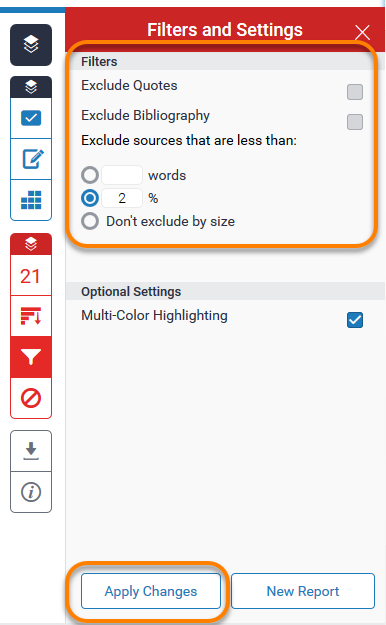
Sources can be included again by un-ticking the boxes.
Exclude sources
When viewing a report you can choose to filter out matches from easily explained sources (e.g. corrected referenced text.)
To exclude sources from a report:
1. Open a source in the Match Breakdown sidebar.
2. Click the Exclude Sources button at the bottom of the side bar.
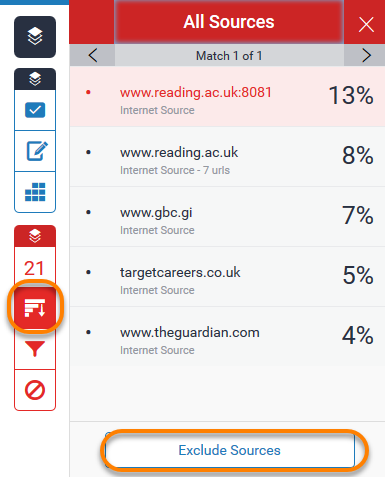
3. Tick the box next to each of the sources you want to remove for this match.
4. And click the Exclude button.
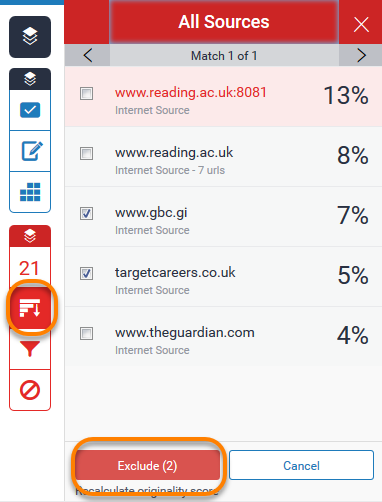
View the excluded sources and restore sources
To see the sources which have been removed from a report click the ‘Excluded sources’ button in the Similarity toolbar.
To return an excluded source to the report:
1. From the Exclusion Sources list, tick the box next to each excluded source you want to return.
2. Click the Restore button.
Or click Restore All to include all sources in one go.
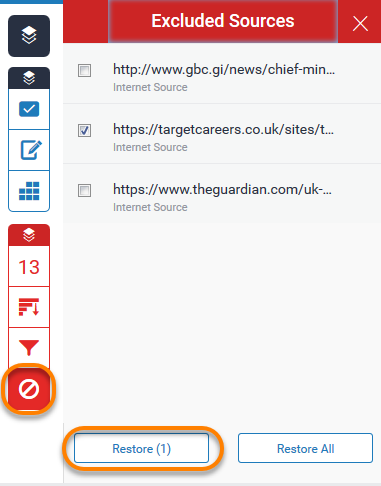
Text-only Similarity Report
If you use assistive technology, you may prefer to view the text-only report. To do this, click on the Text-only report link at the bottom of the page.
For further guidance, please see the Turnitin guidance: Accessing the text-only Similarity Report
Page last updated on September 14, 2022 by taralehane
You must be logged in to post a comment.